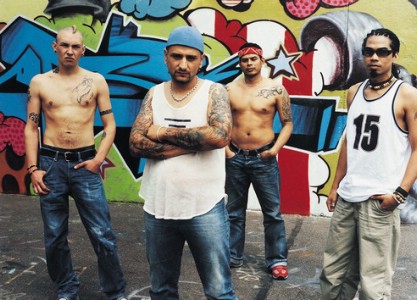
City spent $525,000 to thus-far determine the program needs better oversight |
|
Audit says hard to know if LA gang program works
City spent $525,000 to thus-far determine the program needs better oversight
The Associated Press
MercuryNews.com
July 27, 2010
LOS ANGELES—The city's two-year effort to consolidate the fight against street gangs is poorly monitored and nobody knows whether it's responsible for a drop in gang violence, according to an audit released Tuesday.
Still, progress has been made in following a 2008 blueprint for coordinating efforts to fight gangs and prevent at-risk kids from joining them, City Controller Wendy Greuel said in releasing the audit.
Gang Reduction and Youth Development, which is run out of the mayor's office, has laid a solid foundation for a comprehensive anti-gang strategy but it needs better oversight, Greuel said. |
"This calls into question the effectiveness of the city's approach to keeping our communities safe and gang-free," said a statement from the controller's office.
In the past two years, gang-related crime in areas where the program is operating has dropped 10.7 percent, according to Guillermo Cespedes, the mayor's appointed gang czar.
But gang crime also is down in other areas and Greuel said it was unclear whether the program was working because the Urban Institute, which received $525,000 to evaluate the program, still has not released results after a year.
"It is impossible to measure the overall success" of the efforts, the statement said.
The evaluation is now expected to take another 18 to 24 months, according to the controller's office.
Mayor Antonio Villaraigosa said the findings show progress and that "we've
radically changed the way City Hall fights gang violence."
"Now is the time to take that next step in evaluating exactly what programs and what services are causing the drop in gang violence," the mayor said in a statement.
~~~~~~~~~~~~~~~~~~~~~~~~~~~~~~~~~~~~~~~~~~~~
EDITOR'S NOTE: Here's an OPINION piece from the Los Angeles Times:
.
An anti-gang mystery
OPINION
The centerpiece of the Gang Reduction and Youth Development program was to be a commitment to rigorous, transparent, scientific and verifiable evaluation. That hasn't happened.
July 29, 2010
The whole point of establishing a new anti-gang program in Los Angeles two years ago was to finally be able to identify which strategies worked and which didn't. The longstanding L.A. Bridges and the newer Bridges II programs were jettisoned precisely because no one had any way to determine whether they, and the millions of dollars paid to their gang-diversion and intervention contractors, were doing any good. The centerpiece of the new Gang Reduction and Youth Development program was to be a commitment to rigorous, transparent, scientific and verifiable evaluation.
So City Controller Wendy Greuel's report, released Tuesday, is troubling. The new program has established a good foundation, the controller reported, but has failed so far to produce the kind of evaluation that was initially promised. Without evaluation, City Hall has little to show for its new approach to youth seduced or threatened by the gang lifestyle.
This is serious. Los Angeles is the nation's gang capital, and services for at-risk youth have been reduced over the years by budget cuts and neglect. It is no longer possible to simply throw money at city programs and hope that enough of it lands in the right places to keep kids safe. Voters narrowly defeated a 2008 parcel tax designed to fund youth programs, and many of those who said "no" no doubt believed, as did this page, that new money was desperately needed but would be premature — precisely because City Hall had just begun gearing up to be able to evaluate the impact of each dollar spent.
Yet here we are in July 2010, and we still haven't evaluated the effectiveness of GRYD. It's impossible to know whether the reduction in violence in targeted zones throughout the city is a result of the excellent Summer Night Lights portion of the program — which provides activities for youth during hours that gang violence is most prevalent — or if it's because the city has simply caught a break the last couple of summers. That's no knock on Summer Night Lights; Los Angeles and other cities have long seen the benefit of spending money to keep youth productively occupied. But is the entire GRYD program effective? Would the money be even more effective were it spent instead to restore recently cut library hours? Is it reaching those youth most directly at risk of gang violence? Without transparent data and evaluation, we don't know.
The success of GRYD is crucial, and not merely because the fate of thousands of Los Angeles' children, and the safety and quality of life of the city's entire population, are at stake. The city has begun a season of program cuts; cuts based not on any data on the programs' effectiveness but on their popularity with recipients, political supporters, contractors and labor. That's the world we're trying to leave behind. The new world is one in which elected officials, program managers and the public become accustomed to constant program evaluation, elimination of programs that can't demonstrate success and funding of programs that are effective. Mayor Antonio Villaraigosa and GRYD must step up their efforts on evaluation, not merely for the good of the city's youth but for the future of all city services in an era of shrinking revenue and a skeptical electorate.
http://www.latimes.com/news/opinion/editorials/la-ed-gang-20100729,0,4425573,print.story |
|